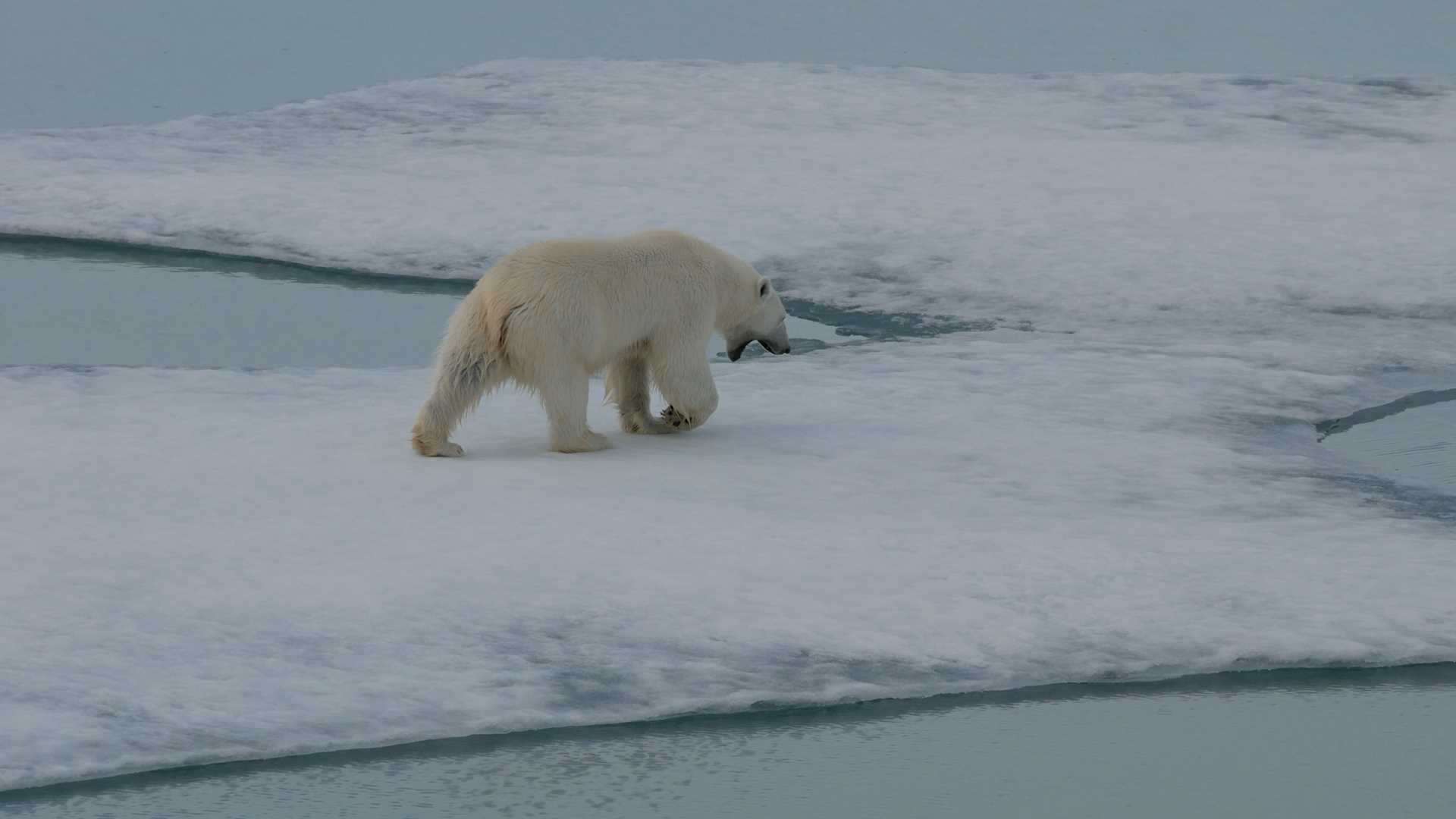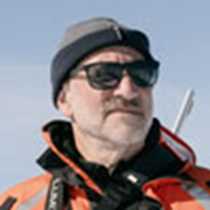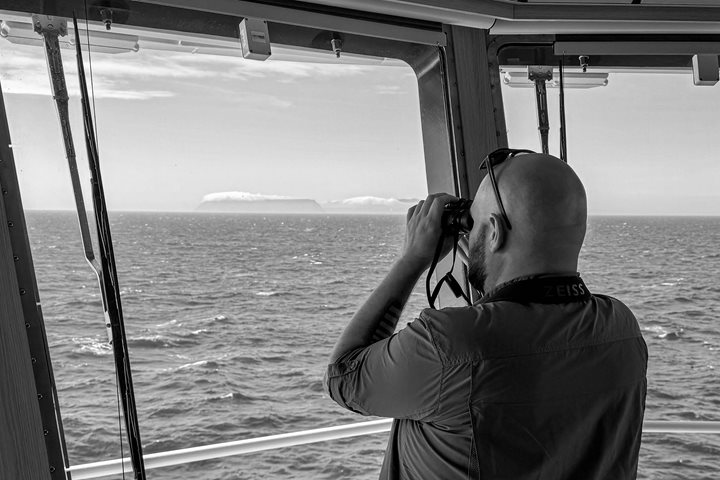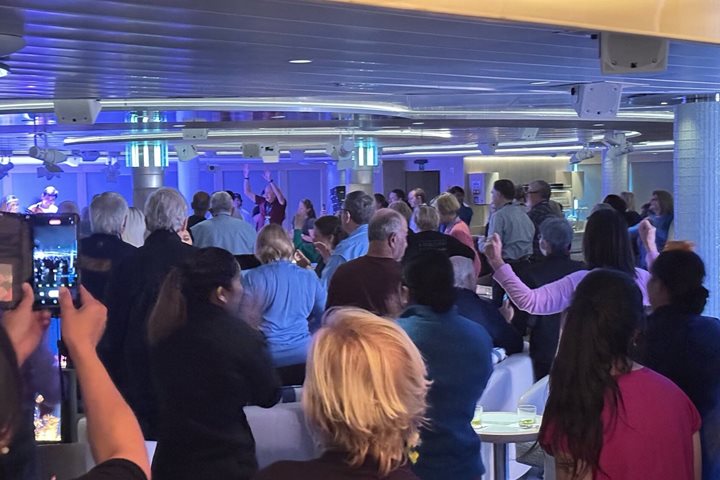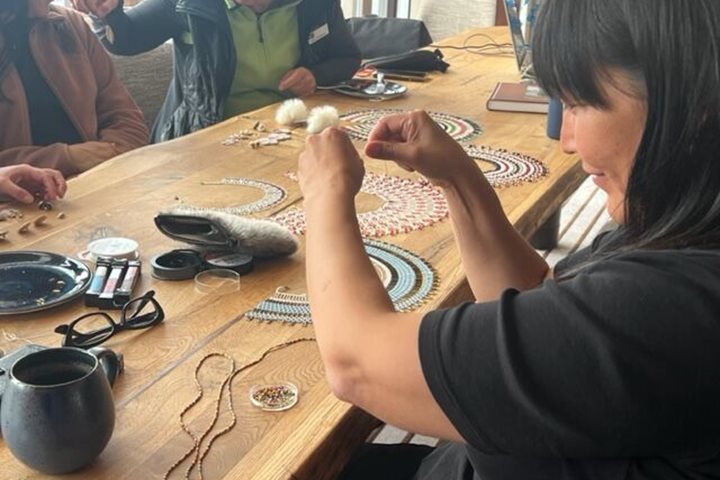National Geographic Resolution continued west overnight, and morning found us cruising among the pack ice southwest of Sachs Harbour as we headed into the Beaufort Sea. Overcast skies and early morning light combined with perfectly calm seas to create exceptional opportunities for photography. The world became a mosaic of glass and ice, disturbed only by the ripples of the ship’s passing and the occasional seal rising to breathe.
The first bear was spotted as we were finishing breakfast. National Geographic Resolution slowed to a crawl and then stopped, but the bear showed little interest in us and soon wandered away across the ice. The captain soon had us moving again, eager to reach a huge sheet of ice he had been watching for days on the satellite images.
But the bears had other plans, and we repeatedly found ourselves slowing to a crawl and then easing slowly forward to watch bears sleeping, feeding, wandering, and rolling about on the ice. By the time dinner was called, we had seen a total of twelve bears, a one-day record for our voyage.
We could see these bears with our naked eyes. Around noon, a young adult male, roughly six or seven years old, cautiously approached the ship. He showed all the signs of a bear who is curious about the ship and its strange smells, but he was a bit anxious and wary, too. He kept yawning and sticking out his tongue, and his ears were laid back instead of forward. After posing for a quick photo shoot, he soon headed back across the ice to observe from a more comfortable distance as we continued on our way.
A couple of hours later, we spotted a pair of bears asleep on the ice. They didn’t so much as twitch as the ship edged closer and closer, and we began to wonder whether in fact they were alive. They eventually woke up when the ship was only a few hundred yards from them, but they seemed more bothered by having been woken than by the presence of the ship. One of them was a very large female, and we suspect the one napping near her was a second or third-year cub. They had recently consumed a seal and soon wandered away from the picked-over carcass to resume their slumber a bit farther from the ship.
Shortly after they moved off, a third bear arrived. This was a juvenile female, likely a bear whose mother had recently sent it off to make its way in the world. Such bears can be trouble because they haven’t yet perfected their hunting skills and they haven’t always learned to avoid humans. She approached the ship with no hesitation, showing none of the signs of anxiety or wariness we saw in the older male bear earlier in the day. Her biggest concern seemed to be whether she would be able to board the ship to investigate those intriguing smells.
After a while, she wandered over to the abandoned seal carcass to look for morsels the others had missed, but she soon gave up on that quest and returned to investigate the ship once more. Guests on the upper decks leaned over the railings to take selfies with the bear in the background. Recognizing that his hopes of reaching the massive ice sheet were not to be realized, the captain soon joined us on deck in front of the bridge. He later admitted that it was the best day for viewing bears he had experienced in a long career of Arctic work.

